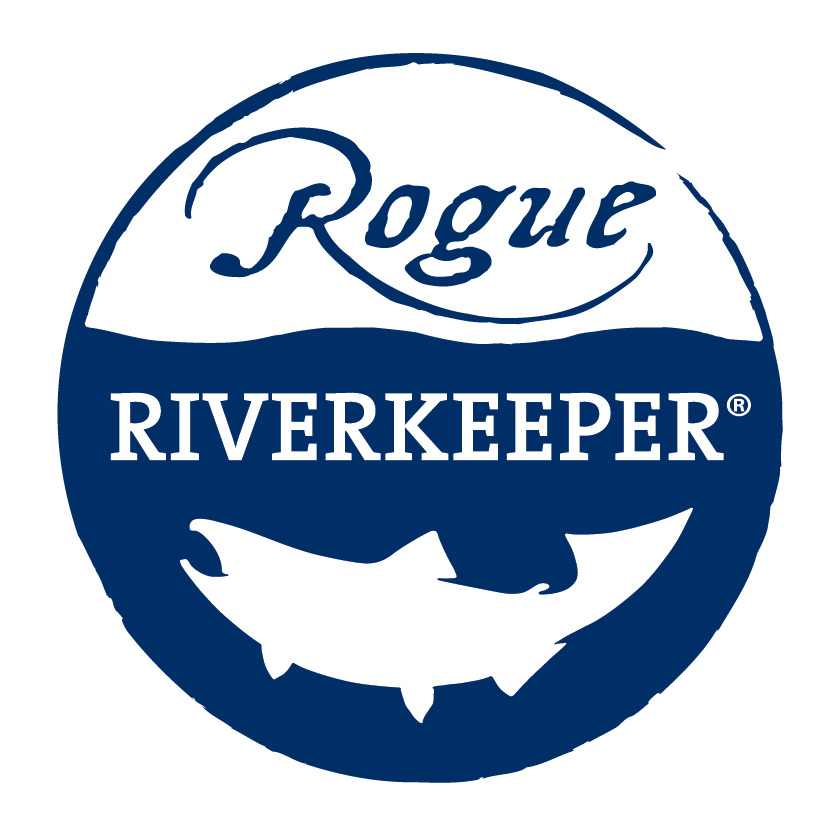Blue Heron Creek: A Triumph Amidst Environmental Challenges in the Rogue Valley
Written by Emily Bowes
Blue Heron Creek in Phoenix, OR. Credit: Wanda Borland
In the heart of southern Oregon near the Bear Creek Greenway, a much-needed victory has taken place. It serves as a symbol of the power of community activism and underscores the importance of protecting our waterways in an era of shifting environmental regulations. On October 12, 2023, an ad hoc citizen's group called Save the Phoenix Wetlands and the clean water advocates at Rogue Riverkeeper secured a significant victory that resulted in the official naming of a previously unnamed tributary of Bear Creek in Phoenix, OR. This tributary, now bearing the name Blue Heron Creek, represents a beacon of hope amidst the mounting environmental challenges faced by wetlands and waterways. “Blue Heron Creek provides the hydrology and pure water that creates the associated wetlands and riparian habitat that supports a wide variety of wildlife and is especially important for many songbirds that are found along the creek.” -Scott English, Wildlife Biologist.
While Blue Heron Creek is a short 0.2 miles long, the significance of this achievement cannot be overstated. Small streams, wetlands, and springs scattered throughout the region are crucial for maintaining water quality and providing a habitat for native fish and a myriad of wildlife. Water below the surface of the land and seeping and moving above the surface are the small sources that are connected to the larger and easily visible waterways. Unfortunately, many of these waterways remain unnamed and, consequently, vulnerable to threats. Prior to the 2020 Almeda Fire, the stream had remained unnoticed as it was covered by a dense growth of invasive blackberries. After the Almeda Fire burned away the blackberry overgrowth, community members could see the significant water feature and stream, yet there was no documented record of its existence. If water features are not mapped and named, they are not taken into consideration in planning and development. This lack of recognition had left this creek exposed to potential harm, putting its survival at risk.
“The consistent cold water that this spring-fed creek provides through the hot summer months is a unique gift for the fish in Bear Creek and the entire Rogue Basin. It certainly merits a name!”
Recent legislative changes have cast a shadow over the protection of such fragile ecosystems. On August 29, 2023, the Environmental Protection Agency (EPA) released its final Waters of the United States (WOTUS) rule, following the Supreme Court's decision in the Sackett v. EPA case. This revised definition significantly narrows the waters previously protected under the WOTUS framework, potentially opening the floodgates for industries and development to compromise and devastate critical wetlands, streams, and other vital water bodies.
The implications of this rule change are profound, extending far beyond the regulatory sphere. Numerous wetlands across the nation, including those in our beloved Rogue River Basin, now stand at risk of losing their protections under the Clean Water Act (CWA). Development projects, ranging from pipelines to sprawling housing developments, have been granted leeway to proceed without adhering to essential federal water quality standards. “Our native salmon and steelhead need cool water to thrive. Drought, heat waves, and projections of more severe weather in the future are roadblocks to producing salmon and steelhead, and make spring-fed streams like Blue Heron Creek even more important. Naming will create awareness of the creek and will eventually help protect native riparian vegetation that keeps all streams in the Rogue watershed cool and productive.” -Dan Van Dyke, Rogue District Fish Biologist, Oregon Department of Fish and Wildlife
For organizations like Rogue Riverkeeper, this news hits exceptionally close to home. Our commitment goes beyond local boundaries; we are a proud member of the global Waterkeeper Alliance, and our vision extends to advocating for clean water worldwide. Our campaigns, whether addressing the impact of commercial jet boat tours on native fish habitats or working to modernize the management strategies for the Wild & Scenic Rogue River, rely on the foundational protections provided by the CWA.
Frances Oyung, RRK Program Director, at Blue Heron Creek. Credit: Jamie Lusch
Amidst these environmental challenges, we find solace and inspiration in recent achievements. The official naming of Blue Heron Creek in Blue Heron Park, an endeavor powered by dedicated community members, highlights the importance of local action in safeguarding our natural heritage and strengthens our resolve to continue advocating for clean water, healthy ecosystems, and vibrant communities. It serves as a symbol of what can be achieved when communities come together to protect their natural heritage. In the face of legislative changes that threaten our waterways, we must remember that our mission to protect and restore the Rogue River Basin remains unchanged. Together, we can rise to the occasion, ensuring that we continue to champion clean water, healthy native fish populations, and vibrant communities in the Rogue River Basin.
“It’s easy to take things for granted until they disappear— like breathing or a heart that beats. Bear Creek, with its associated streams and wetlands, is a life-giving artery supporting fish and wildlife throughout the Rogue Valley. Let’s protect it.”


